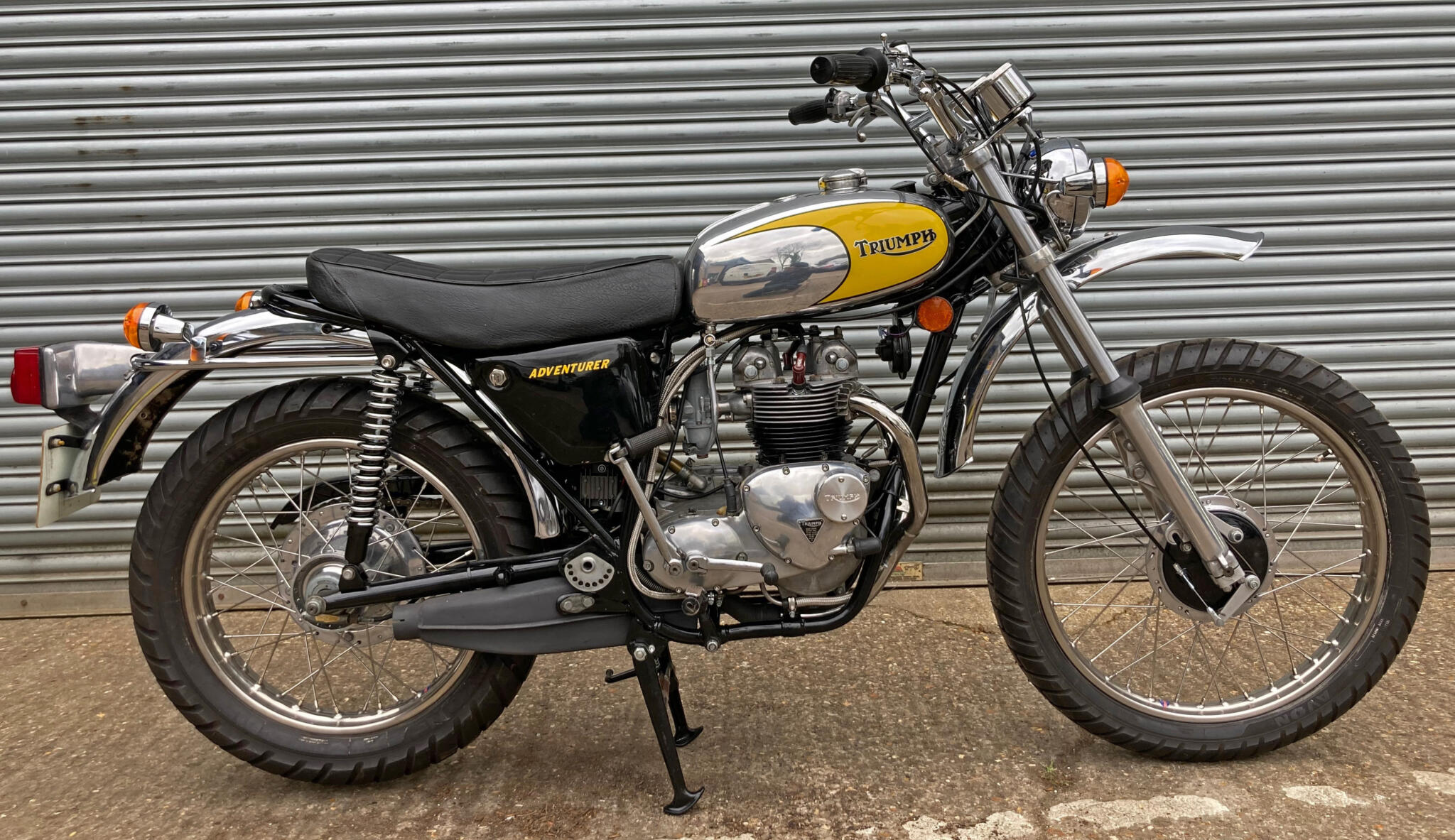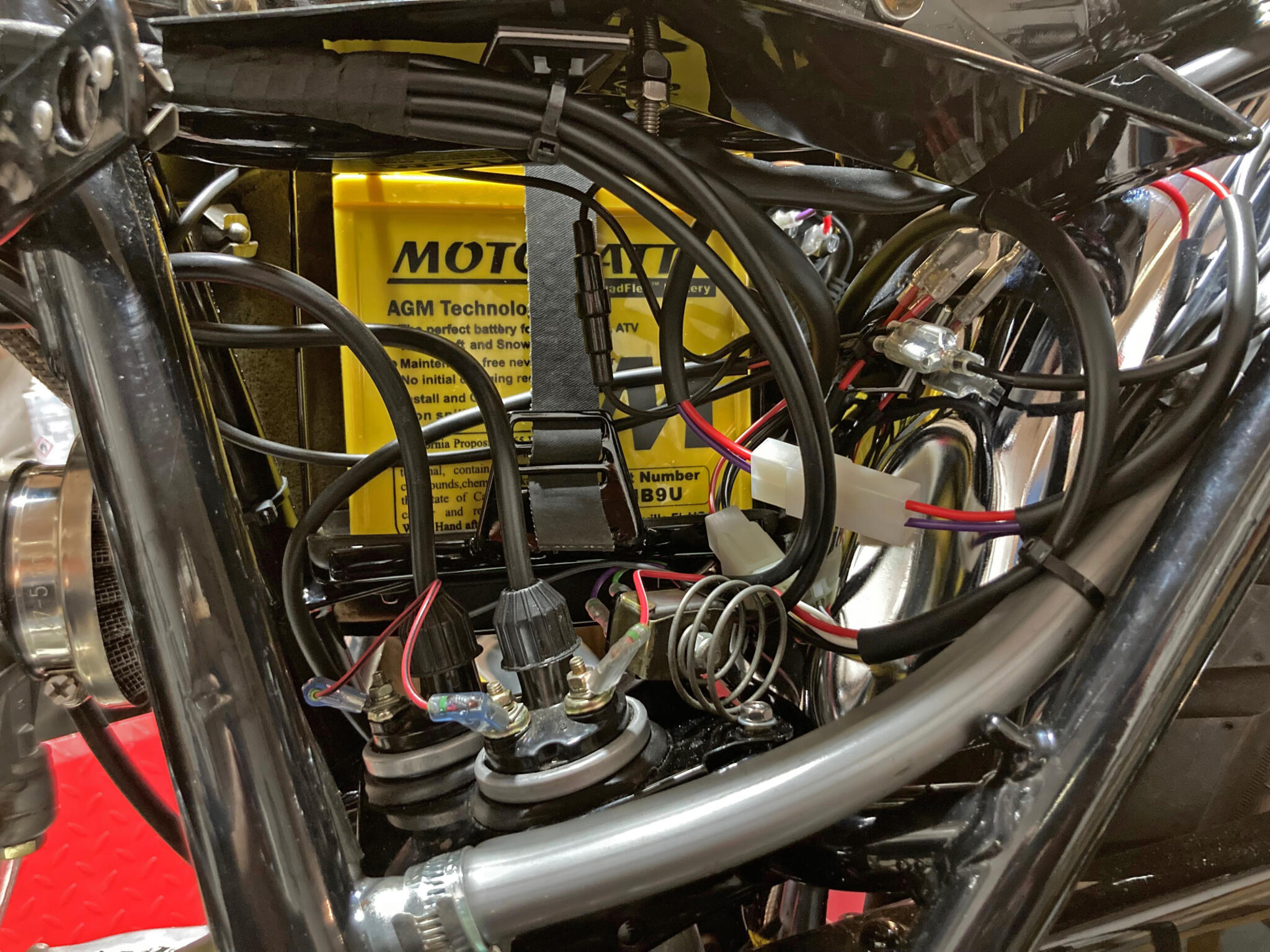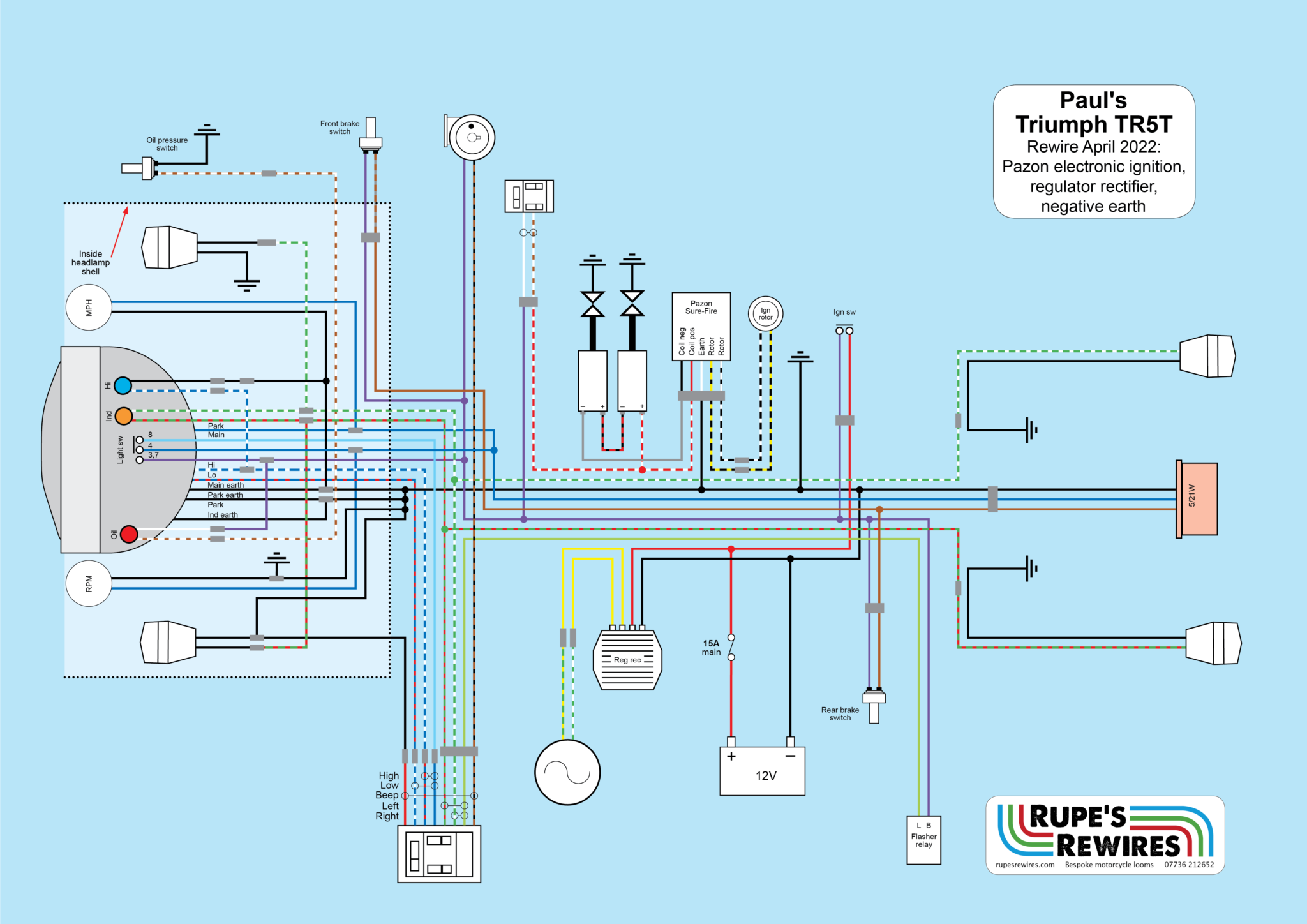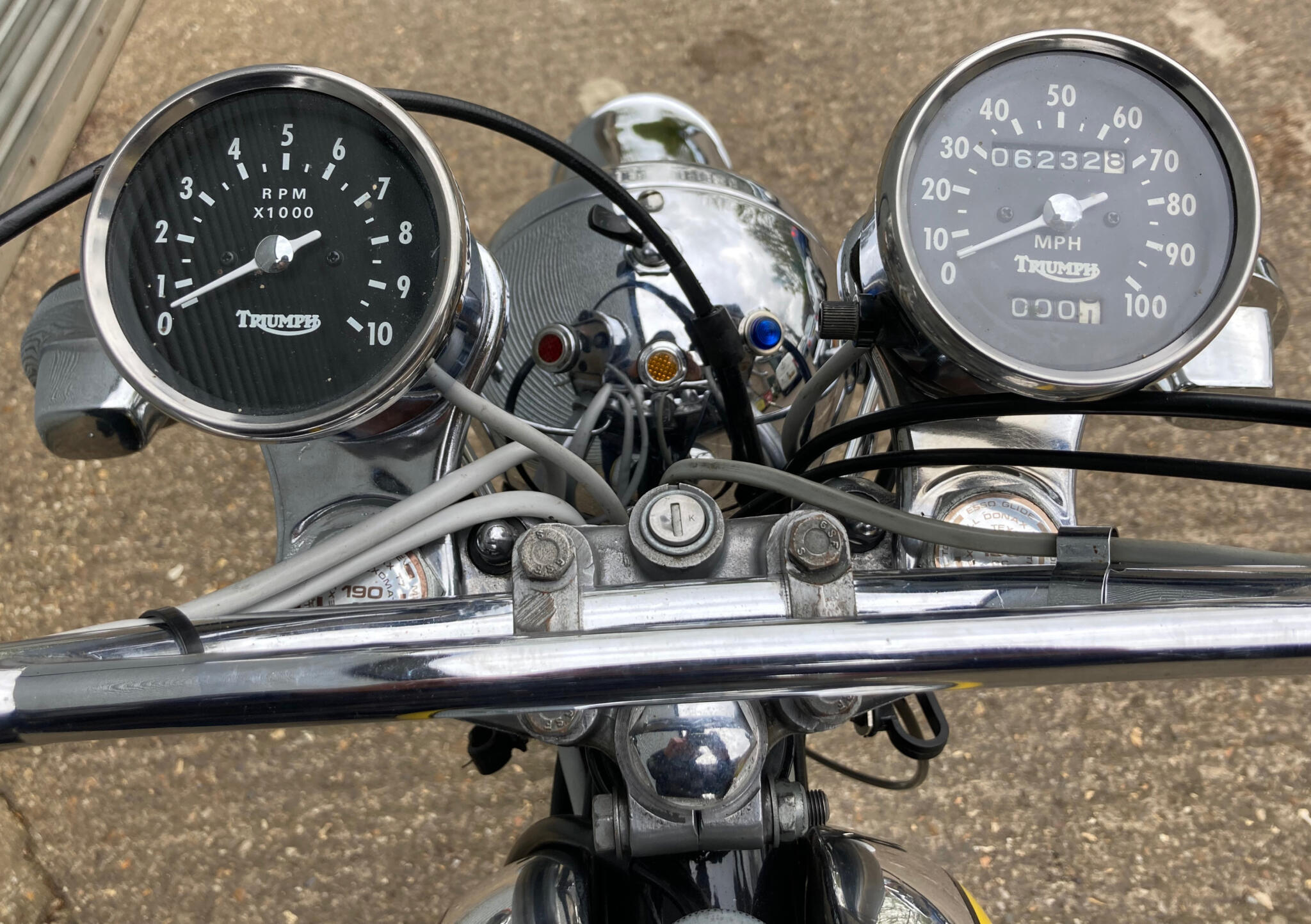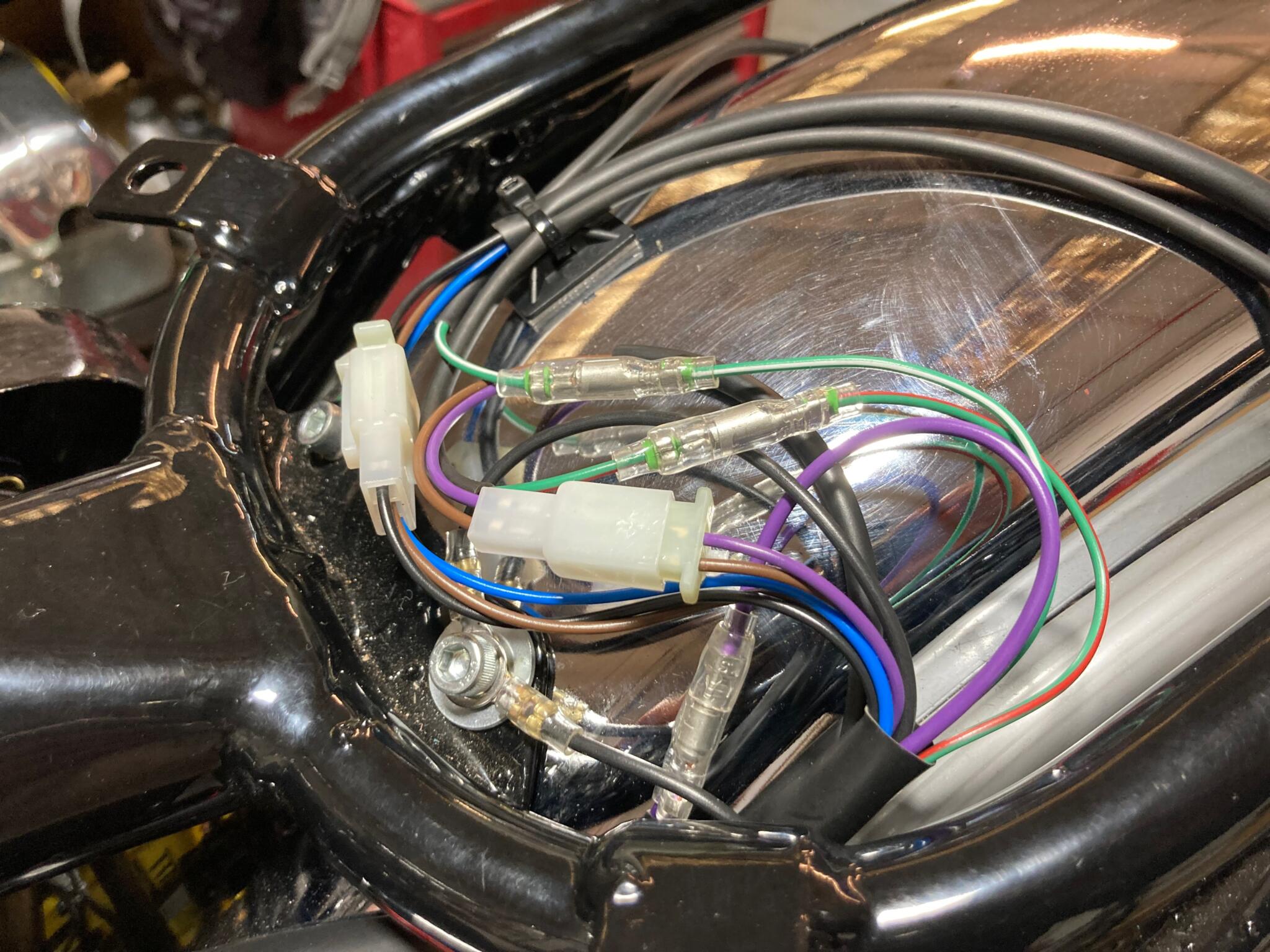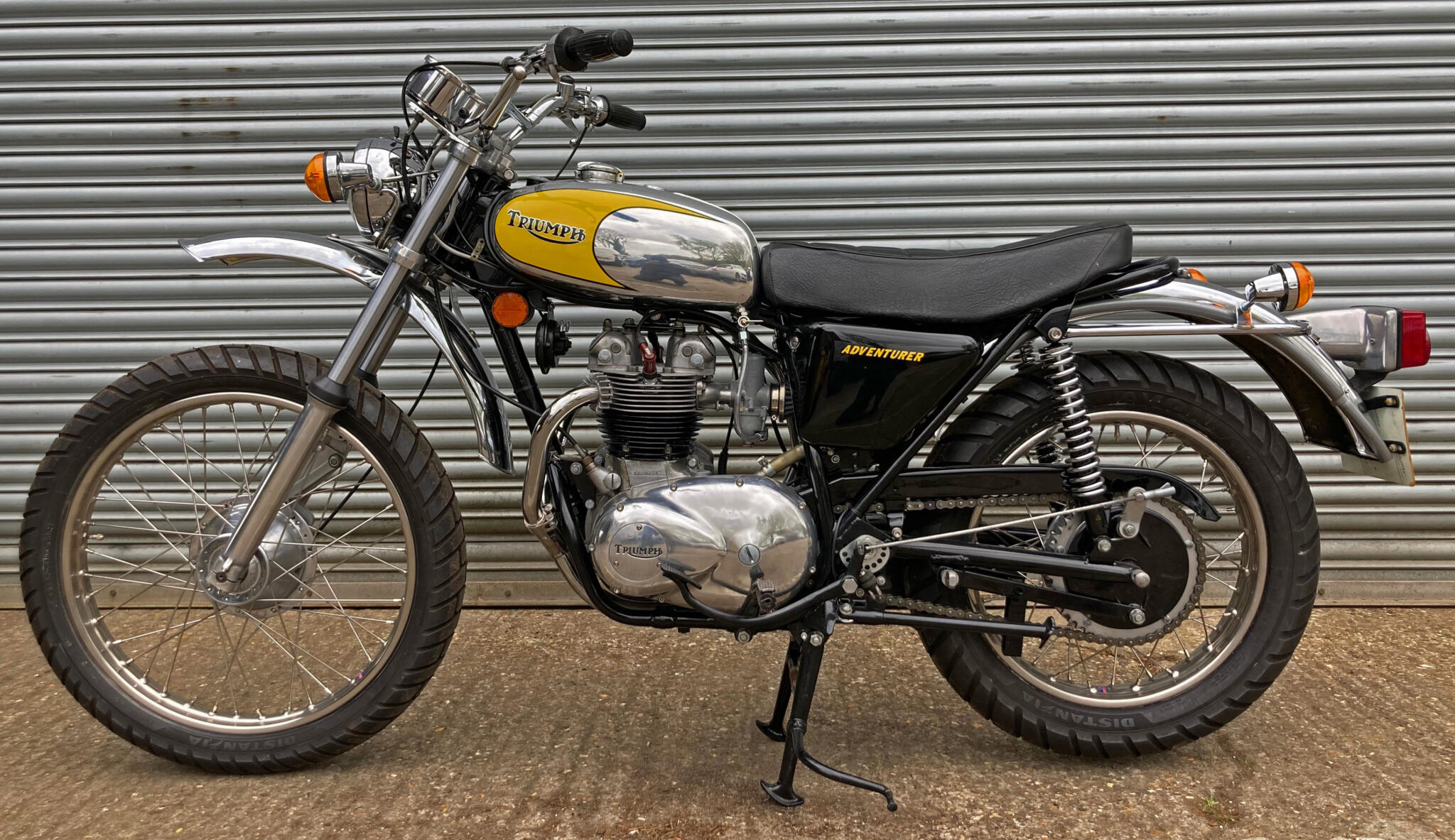
The Triumph switch is a funny thing. When the indicator contact board cracked, a Yamaha XS650 one fitted perfectly
Paul’s Triumph TR5T
Most of these bikes went to the States, but Paul managed to get a genuine 1973 UK model. He’d got it nicely restored, and just needed reliable electrics to complete the job.
It follows all the usual 1970s Brit bike layout, so it made perfect sense to fit a regulator rectifier instead of the Zener diode and bridge rectifier. And to ditch the points for an electronic ignition – in this case, a Pazon system from New Zealand.
You can spend a good few hours adding insulation to redundant contacts, and checking all the lights and switchgear work properly. On this bike the indicator switch contacts, which sit on a little fibre board, had got cracked. By some good fortune a contact board from an old Yamaha switch fitted almost exactly.
The wiring diagram is a classic Triumph twin with electronic ignition, so it should be useful for all you Brit bike wiring fiends out there. Because the tank is a really tight fit on the frame tube I kept the harness width to a minimum in this area. Once it got to the headlamp shell I could use 2-1 bullets to double and triple the various earths and feeds, going off a single main harness cable. It’s a useful trick on any bike where space is tight under the tank.
Paul has a brace of old Triumphs (a Trident and two Bonnies) but this one is his favourite because it’s so light and easy to ride.
